Culinaire 2025: A feast for the senses
Culinaire 2025 had arrived at the SMX Convention Center. Inside Halls 1 to 3, caterers set up booths that resembled stage sets more than serving stations—polished, styled, prepped to impress. Guests checked in through a smart registration system, their QR codes becoming badges of belonging.
The night promised not just food, but an experience: “A bold fusion of flavor, art, and inspiration,” as SM Hotels and Conventions Corp. described it.
The tagline this year was Canvas Reimagined—a promise to engage all five senses, to transform the ordinary tasting event into something immersive, innovative, even futuristic.
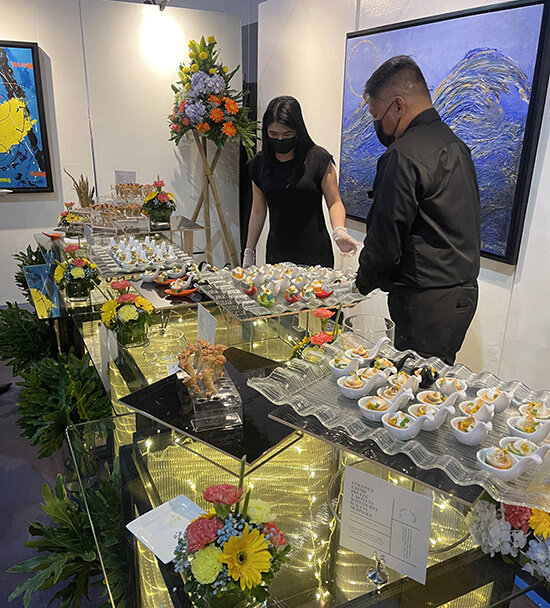
That promise was not without merit. Technology threaded its way into the evening. Guests interacted with AI chat terminals for real-time information. Voting for the “People’s Choice” was instant, digital, democratic. Onstage, RJ Ledesma, smooth as ever, was joined by an AI-powered co-host who gamely shared the spotlight, a novelty that drew amused smiles. The event wanted to prove that the future of meetings, incentives, conventions, and exhibitions could be both dazzling and deeply human.
And yet, if one paused to take in the scene, what was most striking was not the neon glow of screens nor the choreography of program segments. It was the human current that carried the evening forward, often unnoticed: the servers.
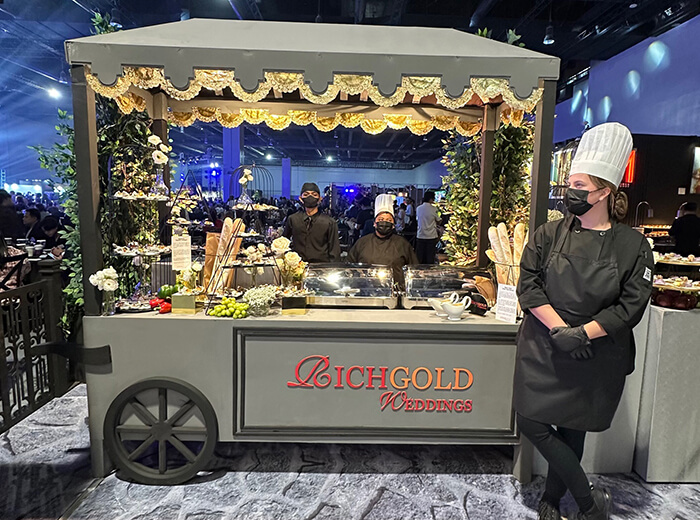
Trays balanced high, they wove through the crowd like dancers on a precarious stage, dodging elbows, sidestepping eager guests, gliding past roped-off installations. They carried glasses as if they were heirlooms. They cleared tables with the quiet rhythm of those who have done it a thousand times before. They became, to my eyes, the true protagonists of the night.
The food, of course, was as much performance as sustenance. Each of the 11 partner caterers collaborated with an artist, producing three-course menus inspired by contemporary art and Filipino heritage.
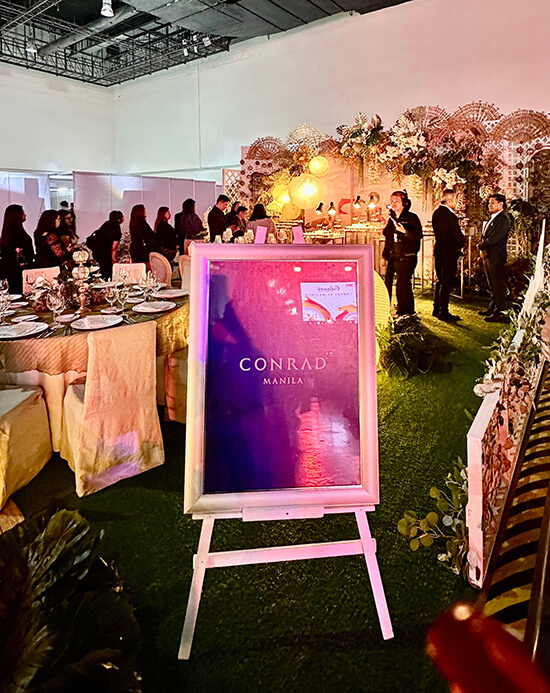
Conrad Manila worked with Mark Justiniani to deliver “depth and imagination on a plate.” Via Mare paired with Vanessa Bautista to summon nostalgia, heart, and heritage. Juan Carlo the Caterer joined hands with Katrina Cuenca to mount a tribute to Filipino identity.
The most memorable dish of the evening, for me, was one called Alab ng Sining. A delicate sheet, thin and ephemeral, was set aflame before our eyes, unveiling a tender cut of A5 wagyu glistening like a gold nugget. The cameras flashed. The crowd gasped. It was theater at its best— a ceremonial burning that crowned the beef with a sense of myth. And yet, as I watched, I found myself asking a question that felt almost subversive: What would this ritual be without the waiter to light the flame?
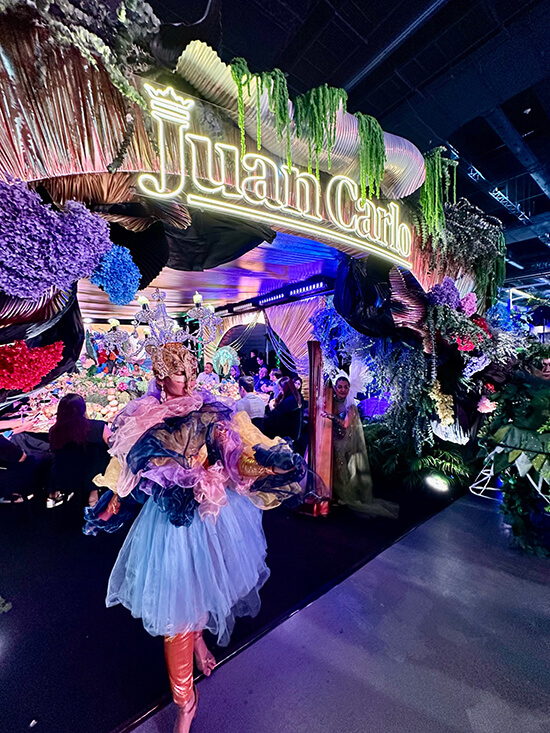
This is, perhaps, what Culinaire makes possible for those willing to look beyond the spectacle. It reveals the often invisible scaffolding of the events industry—the cooks bent over hot stoves, the dishwashers scrubbing in the shadows, the waiters carrying heavy trays with one hand and shouldering exhaustion with the other. In a night that celebrated “collaboration, creativity, and innovation,” I found myself tracing those words back to their most elemental forms: the collaboration of teams behind the curtain, the creativity born not of garnish but of grit, and the innovation of endurance.
Michael Albaña, vice president and general manager of SMX Convention Center, called Culinaire “more than just a showcase of culinary mastery—it’s a celebration of collaboration, creativity, and innovation in the events industry.”
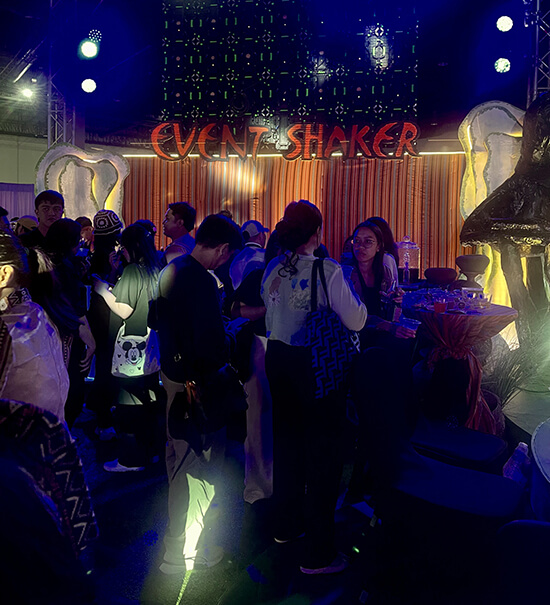
He also noted that “with the expansion of our event spaces and a growing portfolio of eight SMX branches nationwide…we’re unlocking more opportunities to bring meetings, conventions, exhibitions, and milestone events to more destinations across the country.”
As the evening unfolded, judges—renowned chefs and industry professionals—deliberated on the winners for the Culinary Awards. The audience, through their QR codes, voted for the People’s Choice. When the victors were announced, jubilation erupted. Teams roared, jumped, hugged, cheered. For a moment, fatigue gave way to recognition, and the weariness of long hours dissolved in the glow of applause.
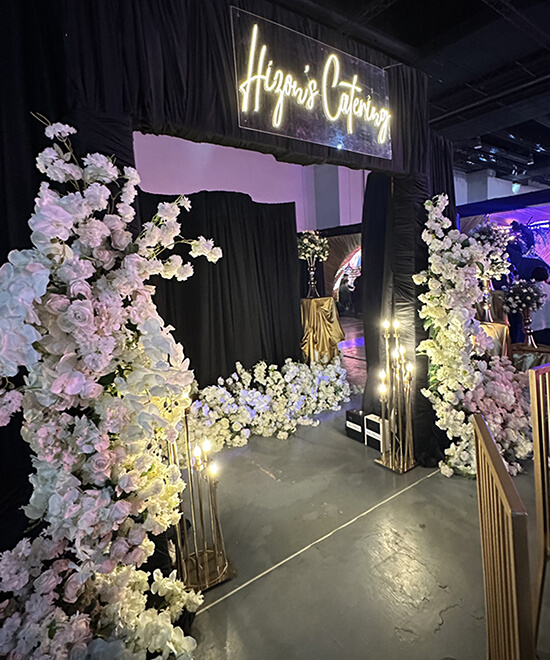
Still, I thought of the rest—the ones whose names would not be called, whose work, though essential, would slip into anonymity once the lights dimmed. I hoped they found small consolations: a celebrity’s smile, a kind word from Tourism Secretary Christina Frasco or perhaps a quiet “good job” from a boss who knew the toll of the day.
Culinaire 2025 wanted to reimagine the canvas. And perhaps it did. But to me, the truest reimagining was not on the plate or in the program. It was in the reminder that beneath the fanfare, the feast is always borne by fire—the kind that burns quietly in the people who keep serving, long after the applause has died.

Celebrating life’s richness. With Patrick Pura, Hizon’s Catering embraced abundance unapologetically. Think festive plating, bold flavors, and a sense of generosity that spills over the edges. It was food designed not just to be eaten but to be shared, a celebration of richness in every sense—culinary, cultural, and communal.
Sustainable cuisine with bold strokes. Sustainability is a tricky canvas, but in the hands of Richgold Weddings and Samuel Penaso, it became daring. Plates were marked by bold, almost assertive choices—flavors that didn’t whisper their values but declared them outright. It was green cuisine with an artistic edge, sustainability not as compromise but as statement.
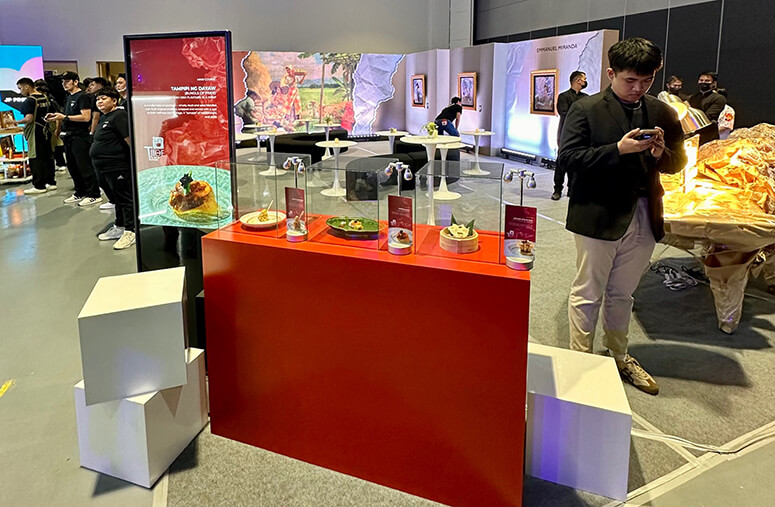
Storytelling through shared local narratives. The Creamery Catering and JP Pining brought forward something warmly familiar: dishes that told stories. The menu read like chapters of a local folktale, with flavors that carried memories of home. Not overly grand, but grounded—an intimate take on the power of shared narratives.
Modern takes on oriental culinary heritage. TJIOE the Caterer and Emmanuel Miranda modernized oriental heritage with respect and flair. Each plate hinted at tradition while stepping firmly into contemporary territory. It was a balancing act between past and present, a rethreading of culinary heritage for a modern palate.
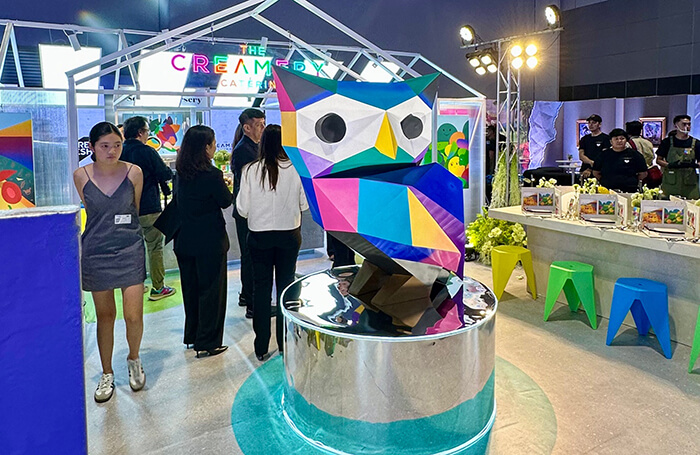
Pride in culture and Filipino identity. Juan Carlo the Caterer’s collaboration with Katrina Cuenca resonated with national pride. The dishes carried familiar Filipino notes but reframed them in a contemporary, artful lens. It was both homage and reinvention, a reminder that Filipino identity remains fertile ground for culinary storytelling.
GQ Mobile Bar, in collaboration with artists Elwah Gonzales, Pancho Alvarez, and Carlo De Laza, impressed with bold, inventive drinks and immersive presentation.
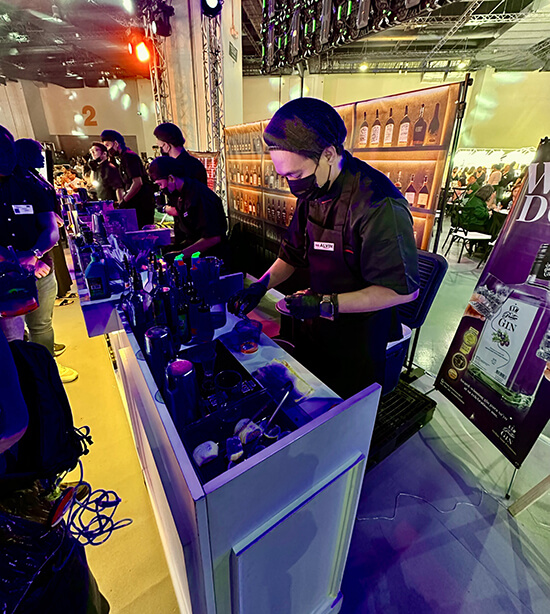
A harmony of complexity and grace. M Catering and Jaime Raphael Atienza’s partnership yielded a menu that was layered but never heavy-handed. Atienza’s sensibility softened M Catering’s complexity, resulting in food that managed to be both intricate and graceful.
Depth and imagination on a plate. Depth is an apt word for Mark Justiniani, whose artistic language plays with illusion and perspective. Paired with Conrad Manila, the dishes invited guests to look twice, taste twice, and discover layers hidden beneath the surface. A menu of imagination as much as of flavor.
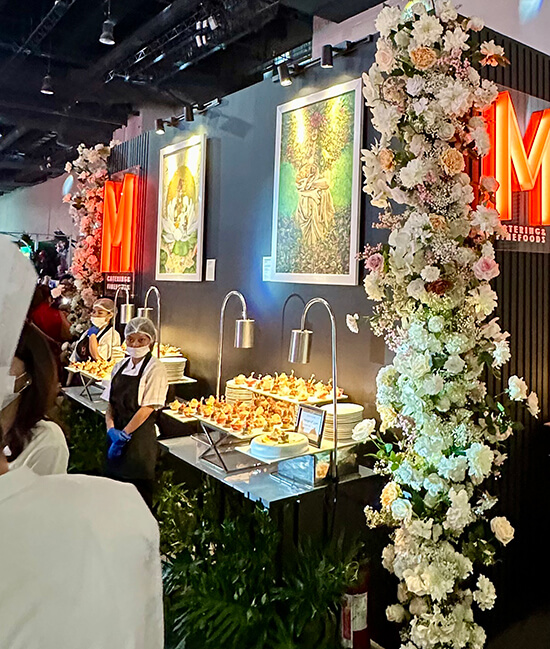
Nostalgia served with heart and heritage. Few brands understand nostalgia better than Via Mare, and Vanessa Bautista amplified this strength. Their collaboration leaned into memory: flavors and textures that tugged at collective sentiment. It was comfort food dressed for a gala, deeply rooted in heritage yet polished for the present.
Event Shaker Mobile Bar, together with Tinta Buscalan and Pasa Kalye Artists, delivered a vibrant fusion of street art and mixology.
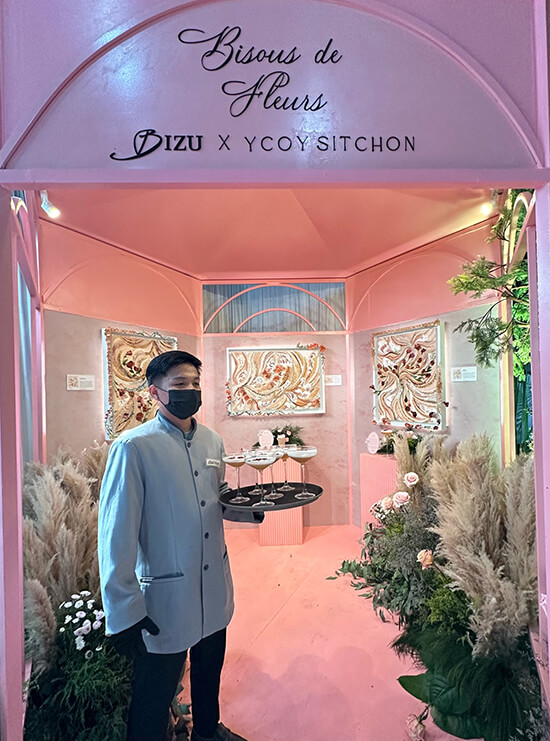
Elegant compositions of emotion and beauty. Bizu Catering has always leaned toward refinement, but this year’s collaboration with artist Ycoy Sitchon elevated elegance into something almost painterly. Each plate felt like a still life brought to motion—delicate, emotive, and carefully staged to evoke beauty that lingers beyond the bite
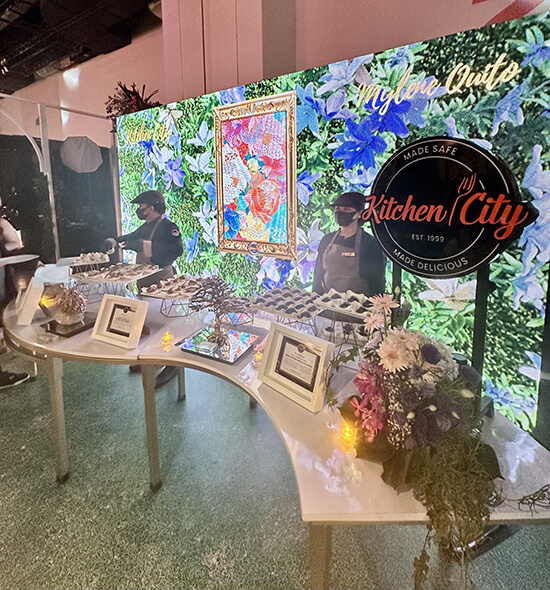
A shared language of creativity. Kitchen City and Mylene Quito spoke in the same creative tongue, producing a menu that felt conversational— plates that communicated with one another, flavors that spoke across borders. It was less about singular showmanship and more about synergy, the give-and-take of ideas made edible.


